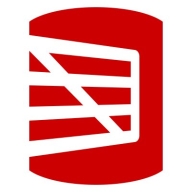

Splunk Observability Cloud and Redgate Monitor are competing products in performance monitoring. Splunk Observability Cloud has an advantage in features, while Redgate Monitor offers better pricing and ROI, making it a compelling choice despite higher feature satisfaction with Splunk.
Features: Splunk Observability Cloud provides comprehensive data analytics, real-time monitoring, and scalable architecture for complex environments. Redgate Monitor focuses on SQL Server performance, providing detailed server health insights and predictive alerts. The comparison highlights Splunk's broader capabilities versus Redgate's specialization in database monitoring.
Ease of Deployment and Customer Service: Splunk Observability Cloud offers a scalable deployment process suited for diverse infrastructures with responsive support. Redgate Monitor provides straightforward installation tailored to SQL environments, with robust customer service, highlighting deployment complexity differences, with Splunk favoring wider application use and Redgate emphasizing simplicity in SQL server contexts.
Pricing and ROI: Splunk Observability Cloud requires a significant initial investment but offers extensive long-term value through comprehensive monitoring capabilities. Redgate Monitor presents a cost-effective setup, yielding a quicker ROI, especially for organizations focused on database management. The comparative analysis identifies Splunk's high setup cost as a trade-off against Redgate's budget-friendly option with faster payback.
| Product | Market Share (%) |
|---|---|
| Splunk Observability Cloud | 1.8% |
| Redgate Monitor | 0.2% |
| Other | 98.0% |

| Company Size | Count |
|---|---|
| Small Business | 20 |
| Midsize Enterprise | 10 |
| Large Enterprise | 43 |
Redgate Monitor offers a comprehensive tool for SQL Server database management, focusing on real-time performance monitoring and diagnostics. It's designed for database administrators seeking to optimize system efficiency through detailed insights.
Redgate Monitor helps detect and address performance issues swiftly, ensuring databases run smoothly. Known for its intuitive interface, it provides customizable alerting and insightful analytics. It supports multi-server environments, making it suitable for large-scale database management. Users appreciate its depth in presenting historical data, often highlighting areas needing improvement in database performance and recommending solutions.
What are the most important features of Redgate Monitor?Industries like finance, technology, and healthcare use Redgate Monitor for its robust performance monitoring, ensuring critical data systems operate efficiently. This tool is implemented to support high-stakes environments where database performance directly impacts service delivery and operational success.
Splunk Observability Cloud offers sophisticated log searching, data integration, and customizable dashboards. With rapid deployment and ease of use, this cloud service enhances monitoring capabilities across IT infrastructures for comprehensive end-to-end visibility.
Focused on enhancing performance management and security, Splunk Observability Cloud supports environments through its data visualization and analysis tools. Users appreciate its robust application performance monitoring and troubleshooting insights. However, improvements in integrations, interface customization, scalability, and automation are needed. Users find value in its capabilities for infrastructure and network monitoring, as well as log analytics, albeit cost considerations and better documentation are desired. Enhancements in real-time monitoring and network protection are also noted as areas for development.
What are the key features?In industries, Splunk Observability Cloud is implemented for security management by analyzing logs from detection systems, offering real-time alerts and troubleshooting for cloud-native applications. It is leveraged for machine data analysis, improving infrastructure visibility and supporting network and application performance management efforts.
We monitor all IT Infrastructure Monitoring reviews to prevent fraudulent reviews and keep review quality high. We do not post reviews by company employees or direct competitors. We validate each review for authenticity via cross-reference with LinkedIn, and personal follow-up with the reviewer when necessary.